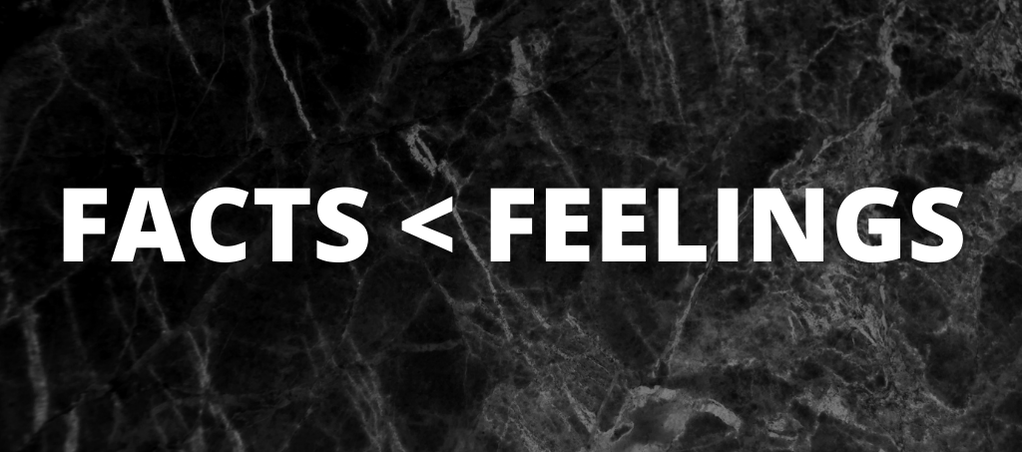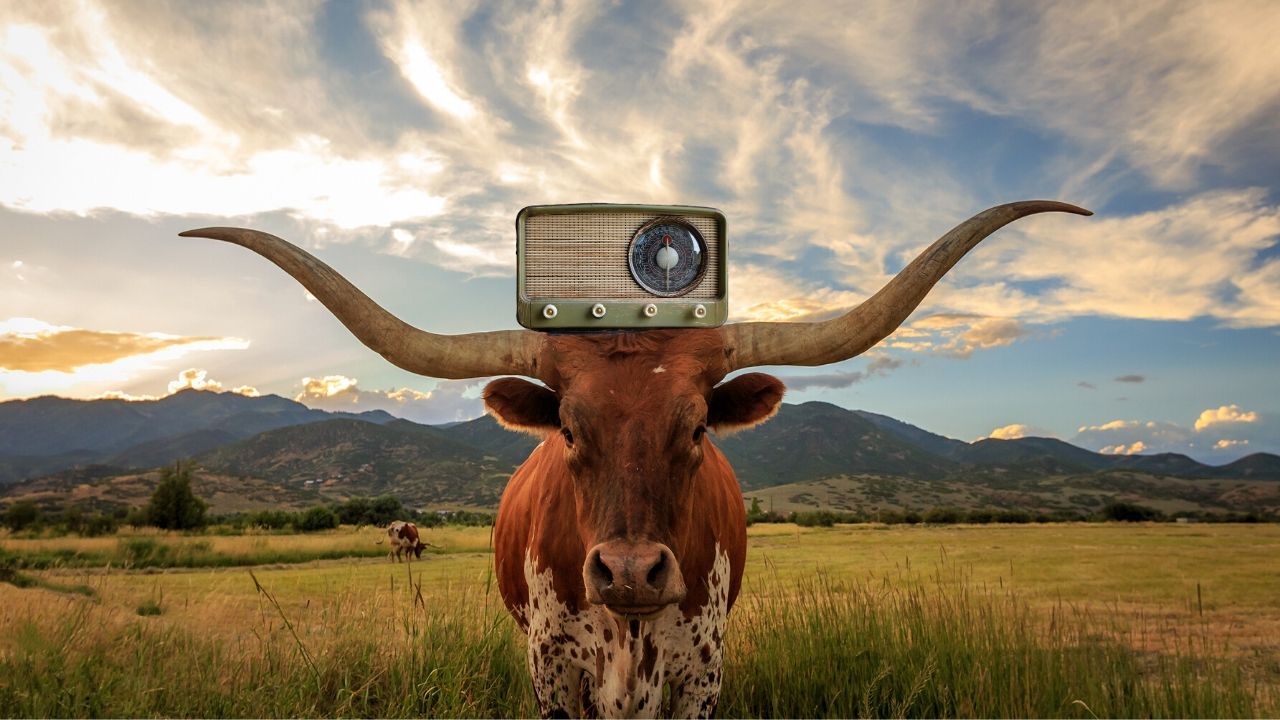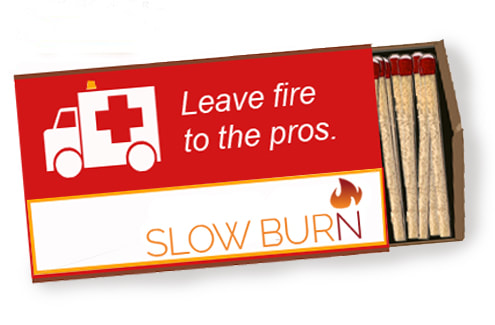|
So many broken ad messages lack humanity...
Not all, mind you. Some make a sincere effort at humanity, but miss the mark a little. However, so many broken ads follow a pattern: “Jam in all these facts! Talk about them! Buy now!” There’s no recognition of the human being at the other end of the pipe, only a recognition that “I want to sell this!” “Fact! Fact! Fact! Fact! Fact! Buy now!” How am I supposed to feel about these facts? How am I supposed to feel about you, the seller? How does any of this solve my problem? And what IS my problem, anyway? Do you, Mr. Seller, even recognize that I’m here? As you know, an advertising message is like asking for a date. What if you start asking for a date by saying, “I have a good job, I make a lot of money, I’m fit and healthy, and I’m available. I would make an excellent mate. We could have lots of strong, healthy children of both genders. They will be well above average and go to the finest private learning institutions. We would live well, and retire to an upper-middle-class enclave on the west coast of Florida. Want to have dinner?” Before the end of the first sentence, the answer was "I have to stay home and wash my hair." There’s no recognition of the prospect, the prospect’s feelings, and the conversation the prospect is already having inside his or her head. A much better, self-centered way of doing it would be this: “Look at my fabulous shoes. Want to have dinner?” At least it’s an amusing non-sequitur. The date might be entertaining. Here now, a brief tale… The Fabulous Honey Parker has just written a novel. Neither of us saw this coming, but it happened. It’s a topical novel that has to get to the public yesterday. Even a friend of ours in publishing said, “This is a great idea. But it has to get out in October, and a traditional publisher can’t make that happen. You have to self-publish.” One joy of self-publishing is self-marketing. And marketing a novel is so much different than marketing anything else--yet so much the same. In the marketing, humanity matters. Nobody cares about the facts of the book. They care about the feeling of the book. The feeling they will get from it. The feeling the story will give them. This extends to the author’s story as well. What’s the feeling behind the book? How did the author feel about writing it? How does she feel about the experience? How does that feeling influence the feeling of joy, laughter, sadness, and/or pathos I’m going to get from buying that book and reading it? “Well, yeah! It’s a novel, not a home improvement product! “It’s entertainment! My rugs and window blinds are not about feeling good. They’re about getting the best deal on rugs and window blinds!” And you, my friend, have missed the boat that’s sailing into the psychology of home improvement. People who buy rugs and blinds are not buying function. They’re buying form. Form leads to a feeling. Aesthetic form makes the customer feel good about being at home. And in a time when people are locked inside more than ever, feeling good about one’s home is huge. Just like feeling good about one’s entertainment is huge. How does the customer feel now, and how will they feel after they buy? This is where the metaphorical rubber meets the road of emotions. Everyone right now is living in A Place They’ve Never Been. All stories have to understand that. Whether they’re stories about home improvement or stories about novels, the stories that sell require knowing how the customer feels. That doesn’t mean talking about the feeling. It means talking to the feeling. Identify the customer’s feeling and know how to speak to it. Master that, and you win the first date. We will be speaking more about this in coming screeds… LIGHTNING BRANDING ON AMAZON The Kindle edition of our new book is now available at Amazon for the bargain price of $19.95. For details about our new Lightning Branding courses, both do-it-yourself and we-do-it-with-you editions, click here. (There's even a video of us!) Cheers, Blaine Parker Your Lean, Mean Creative Director in Park City
0 Comments
WHY ARE YOU EVEN DOING THIS?
As a faithful follower to this weekly screed, you have some kind of interest in advertising. Whether you create advertising for yourself or for someone else, you have some vested interest in "Getting your name out there." Which, frankly, is a really weak goal for advertising. "You gotta get your name out there, kid." There are plenty of names out there. Do you care about them all? Any of them? What names do you care about? You care about the names that make you feel something. Ah, feelings. HOW DO YOU MAKE PEOPLE FEEL? This screed makes you feel something. Some people love it. I have the fan mail to prove it. Some people hate it. Sometimes, when I write things that don't toe a particular party line, people feel insulted and they unsubscribe. So it goes. Their loss. But feelings are at the root of everything we do in creating advertising. Creating an effective advertisement requires understanding how to make a single, defined individual feel the right thing about that which is being sold. THERE MUST BE A RELEVANT ELEMENT OF ART, POETRY, SHOWMANSHIP, FINESSE, SOMETHING An advertisement can't just be a Post-it Note that says, "Yeah, we sell that, too!" And, unfortunately, that is what so much advertising is. "Hey, we sell this for all your fill-in-the-blank needs!" Which brings us to why I'm even on this tear. Something happened over the holidays, and it represents a great loss to many people, including those of us with a fondness for smart radio advertising that means something. ON CHRISTMAS EVE, WE LOST A LEGEND The radio advertising genius Dick Orkin went to the great Radio Ranch in the sky. Dick was 84. And he was perhaps one of the single best minds ever in advertising. His specialty was radio, but his brand of thinking informed advertising at large for anyone willing to pay attention. His brand of thinking is especially useful now, in our age of not-too-deep thinking and information overload. Dick was no dummy. He had a bachelor's degree in speech and theater from Franklin & Marshall, a master's in clinical psychology from the Phillips Graduate Institute, and studied for his MFA at Yale. DICK KNEW THINGS One of the things he knew, and which informed everything in his work, was how to matter to the listener. His Famous Radio Ranch was known for developing funny radio campaigns. The Radio Ranch had a wealth of advertising trophies backed by an abundance of impressive, results-producing campaign credits for businesses across the nation and even across the ocean. Long before I knew who Dick Orkin was, I knew his work. It leapt out of the radio, grabbed you by the ears, made you listen--and made you care. When I was eventually working in Los Angeles radio, I had the good fortune to learn from Dick at industry seminars, and later in private sessions and classes at his home in Toluca Lake. DICK WAS A THINKER AT A DEEPER LEVEL One of the things that so many radio advertisers want to have is a "funny commercial." There's a kind of conditioning that has come with Big Agency Advertising, and it's the (sometimes) misguided notion that advertising needs to be funny. In past screeds, we've dismantled that notion and proven that funny doesn't sell. Relevance sells. It doesn't hurt if it's funny. But it must be relevant. Dick was happy to explain how to be funny, and how to make it relevant at a deeper level than most slap-dash comedy radio commercials ever reach. DICK ALSO SHARED THE UNDERPINNINGS OF HIS PARTICULAR BRAND OF GENIUS In searching for examples of Dick's work, I came across a YouTube clip. It was posted by Dick's good friend, radio guru Dan O'Day. For years, Dick and Dan worked together, training radio professionals in ways to make better radio. One of the Dick Orkin presentations that Dan sells as an info product is called, The Architecture Of Comedy. In the YouTube clip, before we get there, Dick has been playing radio commercials for the audience, and discussing how the comedy works. He then says, in part: [The] fact that sex and death are the basis of so much humor, including some of the materials that you've heard in the commercials here, is because these are things largely out of our control. If we could control them, of course, life would go swell, because everything is in our control. It's a perfect world. But we know it's not a perfect world. Everything human is pathetic. As long as a person takes themselves seriously, there will be humor in the world. Because we're taking ourselves seriously in the face of an imperfect situation and an imperfect world. Only man has dignity. Only man, therefore, can be funny. THIS IS NOT STANDARD COMEDY INSTRUCTION THINK Dick goes on to talk about pomposity, ego inflation, ego deflation, the comedy of Type A versus Type B personalities, the awareness and the capacity to understand living in a world where things go wrong and you can laugh at them, the sense of maturity and self-worth required for that, and how a sense of humor is the ability to avoid getting caught in mind ruts where you can't see the opposite. This is somewhat different than the standard "comedy rules" type of instruction that often comes from comedy experts--things like "Use The Comedy Rule of Threes." There are all kinds of technical rules that help make comedy work. But rarely does any guru talk about the human condition and the underpinnings of life that need to be understood before trotting out those rules. DICK PROVIDED SOMETHING THAT IS SORELY LACKING RIGHT NOW He provided thoughtful insight into that which lies beneath the craft. He had a depth of knowledge in performance and psychology that he was readily willing to share. In the present info-overload culture, the kind of depth that Dick brought to his how-to insight are sorely lacking. Tools and tricks and surface features are often all anyone gets. They get only the tip of the iceberg. The iceberg's foundation--the 90% of the substance that makes it possible--is hidden beneath the surface. Dick was great at revealing the foundations and making them relevant and useful. And without relevance and usefulness, where are we? Dick Orkin has left the ranch. Long live Dick. As always, Blaine Parker Your Lean, Mean Creative Director in Park City ARE YOU PUTTING UP STUMBLING BLOCKS BETWEEN YOU AND YOUR CUSTOMER?
Imagine that you have a fabulous business. It has survived the administrations of Jimmy Carter, Ronald Reagan, George H.W. Bush, Bill Clinton and Barack Obama and continues going strong. You compete in a brick & mortar retail niche that is being crushed by the big-box stores. You are actually, physically as big as a big-box store. But you are even bigger in that you blow them away with product mix, personal attention, customer service, after-sale follow-up, and overall friendliness. You have sales people who have been with you for decades. You have customers who've been with you since day one. Sounds like a branding juggernaut, right? THAT DEPENDS... Thirty years ago, a shopper would have been drawn into this store via a simple message. They would have decided whether they liked the feeling of the store after walking through the door. Today, doors have been replaced by windows. Small ones. Ours is an age where shoppers do their research on handheld computers. They look at the store through a window the size of a deck of cards. Or maybe they're using a bigger computer, one with a window the size of a small TV. Through those little windows, they go shopping. Instead of walking through the store, looking at the product, talking to the salespeople, and immersing themselves in the ambience, they stand outside. They look at the store through a window. AND THAT WINDOW IS ONLY AS GOOD AS WHAT'S BEEN PUT IN IT That website visit, peeking through that window, has to substitute for walking into the store and getting a feeling for the place. In the case of our long-lived, family-owned superstore, here's what we're seeing through the window: A dated logo. A row of buttons. A column of product photos. A slideshow of products and national brand logos. An offer for email savings. A 90-day price guarantee. A suggestion to shop for package deals. A link to a 7-year-old magazine article. Information on corporate accounts. The news that they take credit cards. A scrolling row of national brand logos. What does the shopper see through the window? JUST ANOTHER BIG-BOX STORE It's busy, it's full of product, it has lots of buttons... And it feels nothing like the friendly, affable place where longtime consultants have made a home for the shopper who, instead of just a box, wants a relationship. This website is the product of a template provided by a service that specializes in websites for independent retailers. And this website is immense. It is robust. It is a feat of website development. You cannot argue the technical expertise that delivered this towering behemoth of web commerce. Unfortunately, it looks a little dated. And it is devoid of brand. WHAT IS BRAND? Once again, since you pay attention in class, you know the Slow Burn Marketing mantra for brand: it is the ONE way your CORE CUSTOMER should FEEL about your business. Why ONE? Because focus is essential. Nobody can focus on two things. Multi-tasking is a myth. Why CORE CUSTOMER? Because when you define a single person to whom your speaking, it lets you have a coherent and meaningful voice. Why FEEL? Because emotions are key in making decisions. Without emotions, decisions are virtually impossible. Study your neuroscience and you'll find it's true. So, this store's brand is almost nowhere to be seen or felt on this website. There's an "about" page that begins to hint at how it feels. As an ironic aside, the company that built this website seems to have a really good brand. Visit their own website, and you immediately get a sense of what they're about and why you should like them. SO, WHAT SHOULD BE HAPPENING HERE? That's a complicated question with a complex answer. But you don't come here for that. You come here for simple solutions! So, very simply: as soon as I land on that website, I should feel a compelling reason to stay there and learn more about this retailer. Why should I get off the sofa and drive down there? Pique my interest! Make me feel wanted! Ask me a leading question! Right now, this website is the online equivalent of walking into retail warehouse store that has bulk-stacked boxes everywhere. And that is completely the opposite of what this store's brand really is. THE WEBSITE IS AN OBSTACLE TO FEELING THE RIGHT THING ABOUT THE BRAND This is not unique. It happens all the time. In some ways, it's a product of looking down the wrong end of the telescope. It often starts with a simple question. "What media should we be using?" "We need to have a big retail website!" "No, we need to be in social media!" "Social media doesn't produce! We need online videos!" "We need to move back to traditional media! That's where our demographic is!" The medium is perceived as the message. The tail wags the dog. THE REAL QUESTION REQUIRES TURNING THE TELESCOPE AROUND It requires asking, "Who is our customer, and what should she feel about us?" EVERYTHING related to branding and marketing boils down to that one question. It's all about your customer and what you're saying to her. How do you want her to feel? How do you be evocative? How do you not only be authentic, but convey it in a way that's magnetic? Once you've done all that, then comes the executions and the media. PEOPLE HATE IT WHEN I BRING UP THIS BRAND I do it because it's insanely simple, everyone knows it, and the branding as we know it has been going strong for over 30 years. Motel 6: "We'll leave the light on for you." This is the sensible, budget motel chain that cares for you as mom would. They leave the light on for you! That feeling is basic. It's a fundamental dynamic. But their USP is something else entirely: the lowest price of any national chain. That's not so squishy. It could be depressing. But the brand makes you feel better about getting a cheap room. 30-plus years of Tom Bodett's folksy voice coming to you out of the radio, telling you they leave the light on for you, that's what launched the brand juggernaut. BUT THAT'S NOT ALL! Radio made Motel 6 huge. It's a $2 billion company now. But they're also on Facebook. Look at their posts. "Top 6 Ways to Travel More in 2017." Hashtag: #ThrillsNotFrills. (Which was also the subject of a radio commercial, which is also available on YouTube, another form of social media.) There's a link to the best hot chocolate in the country. "Nothing like hot cocoa to warm your soul and your stomach." Ten winter driving tips. "Keep calm and drive safely." In an appeal to a new generation: share your sing-along-in-the-car video for a chance to win a free night at Studio 6. THEIR TWITTER FEED? Feels exactly the same. Their website? "Rates that aren't a gamble" for a Vegas escape. "Pet friendly." AARP and Military discounts right up front. The site is simple and clean and friendly--just like a Motel 6. This brand is rock solid. It is not fancy. It will not appeal to the die-hard HiltonHonors platinum member. But I know a hugely successful internet marketer who's also a penny pincher. He brags about how little he pays for a room. Guess what he likes. ARE YOU PUTTING UP OBSTACLES TO YOUR BRAND? Or is it front and center, allowing your customer to feel the right thing and self-select? Your brand matters. Especially in an age of peeking through little windows and making snap judgments, your brand matters more than ever. If you don't make the customer feel the same, right thing across all your touch points--in every place you have your marketing--you run a high risk of losing business to those who do practice that. Know your brand. And share it freely, widely, and consistently. Emerson wanted us to know that "A foolish consistency is the hobgoblin of little minds." But a strategic consistency? That is the hallmark of a great brand. As always, Blaine Parker Your Lean, Mean Creative Director in Park City www.slowburnmarketing.com |
AuthorBlaine Parker is prone to ranting about any and all things related to brand. In many ways, he is a professional curmudgeon. While there is no known vaccine for this, the condition is also not contagious. Unless you choose it to be so. Archives
February 2022
Categories
All
|
|
© Copyright 2020 Slow Burn Marketing LLC |



 RSS Feed
RSS Feed

